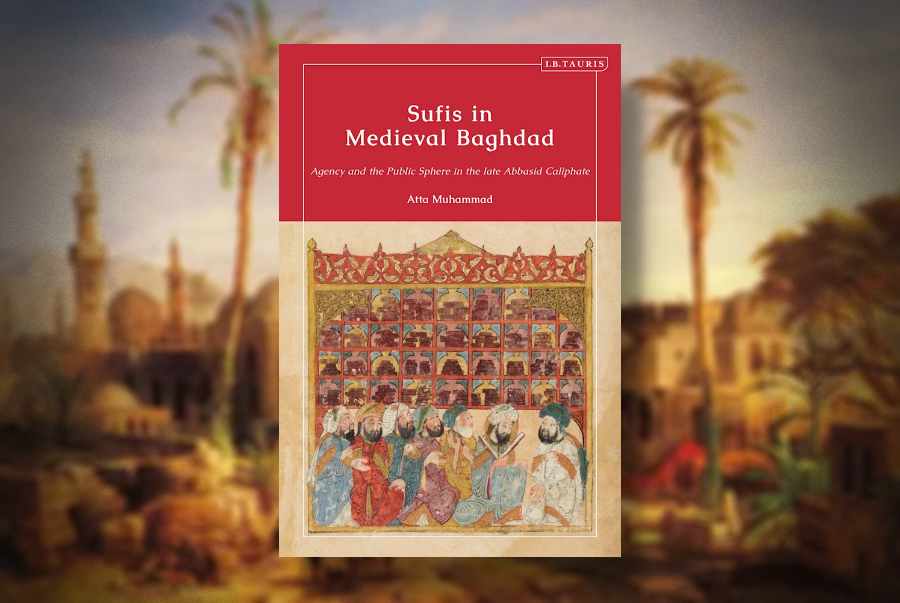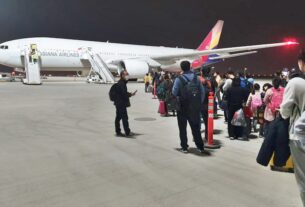Tue 26 December 2023:
- Book Author(s): Atta Muhammad
- Published Date: October 2023
- Publisher: I.B.Tauris
- Hardback: 192 pages
- ISBN-13: 9780755647590

There is a tendency to think about public spheres as modern socio-political innovations. German philosopher Jurgen Habermas, who coined the idea of public sphere in the 1960s, said it was a place that lies between state and civil society, where common people critically and rationally debate matters of common interest. While other thinkers have debated the concept and what it means, there is a belief that it is a post-enlightenment and secular phenomenon. However, something called a public sphere can be observed in the premodern world and includes religious institutions. Medieval Baghdad was one such place where a public sphere existed, argues Atta Muhammad. Indeed there were multiple public spheres and a robust and critical engaged population – Atta Muhammad argues in his new book Sufis in Medieval Baghdad: Agency and the Public Sphere in the Late Abbasid Caliphate.
In the 11th century, Sufi movements became prominent in society, “the roles of the Sufis of Baghdad in religious, social and political spheres that brought tangible benefits to common people…These Sufi figures tried to fulfil a range of the religious, spiritual and material needs of common people through the charitable institutions of ribats or Sufi lodges.” These lodges weren’t the only public institutions available but they were among the most prominent, especially during the Seljuk and Ayyubids dynasties. Rich and poor were associated with these lodges and they provided common space where elites, scholars, sufis, merchants and common people could frequent. Interestingly, while many charitable and sufi lodges were founded and funded by elites, quite a large number were also funded and founded by members of the general public. They offered a range of charitable activities and were at the core of public life in Baghdad. One important way the ribats contributed to the expansion of public space in Islamic societies was through educational initiatives.
According to Muhammad, there were two types of Sufi educational institutions – one involves the master-disciple relationship, where a sheikh guides students in a range of topics from correct Islamic behaviour, belief, but also personal and professional training. Pupils could learn practical skills useful to their trades, useful things for their everyday life and spiritual training.
The second type were expanded ribat, madrasa and mosques, which disseminated knowledge to disciples and the masses. Students from across the world would come to these institutions to learn. “In the medieval Islamic world, travel for the sake of knowledge was a prevalent phenomenon.” These students would be from a wide range of socio-economic backgrounds, which demonstrates a growing educated public was emerging in medieval times. Libraries were also an important part of these lodges, which contained books for both scholars and wider society, indeed libraries were not only in mosques, schools and lodges, but were also added to hospitals and mausoleums too. There were also many female Sufi lodges that facilitated these developments among women too. Above all else, the lodges provided spaces for people to debate the issues of the day.
Religious institutions were not the only forms of public sphere available to people. “People belonging to a non-ruling elite created spaces through which they contributed to the public good…These groups and organisations could be called ‘civic associations’ as they were formed by religious, spiritual and mercantile groups with the aim of raising the living standards of their communities and towns.”
While contributing to the public good was everyone’s responsibility. This was highlighted by how, when a Turkish soldier tried to assault a Muslim woman outside the Jami’a Mosque in Baghdad in 1069, a riot broke out. The day after the riot, people gathered outside the Caliph’s palace and demanded justice. The Caliph was told about the situation and merchants and local notables went to resolve the situation.
Sufis in Medieval Baghdad provides a fascinating study and snapshot into civic life in medieval Baghdad. It is clear that a variety of civic and non-elite institutions played a crucial role in providing security, education and improving economic development alongside elite institutions and the government. Everyday people were very interested and actively involved with running their societies – regardless of whether or not the ruler wanted it or not. Muhammad has given a good overview of what tools were available to people and the theoretical framework that shaped their understanding. Sufis in Medieval Baghdad will be a welcome addition to growing scholarship on the role of the public in daily life and society in premodern times.

By: Usman Butt
-MEMO
______________________________________________________________
FOLLOW INDEPENDENT PRESS:
WhatsApp CHANNEL
https://whatsapp.com/channel/0029VaAtNxX8fewmiFmN7N22
![]()
TWITTER (CLICK HERE)
https://twitter.com/IpIndependent
FACEBOOK (CLICK HERE)
https://web.facebook.com/ipindependent
Think your friends would be interested? Share this story!





